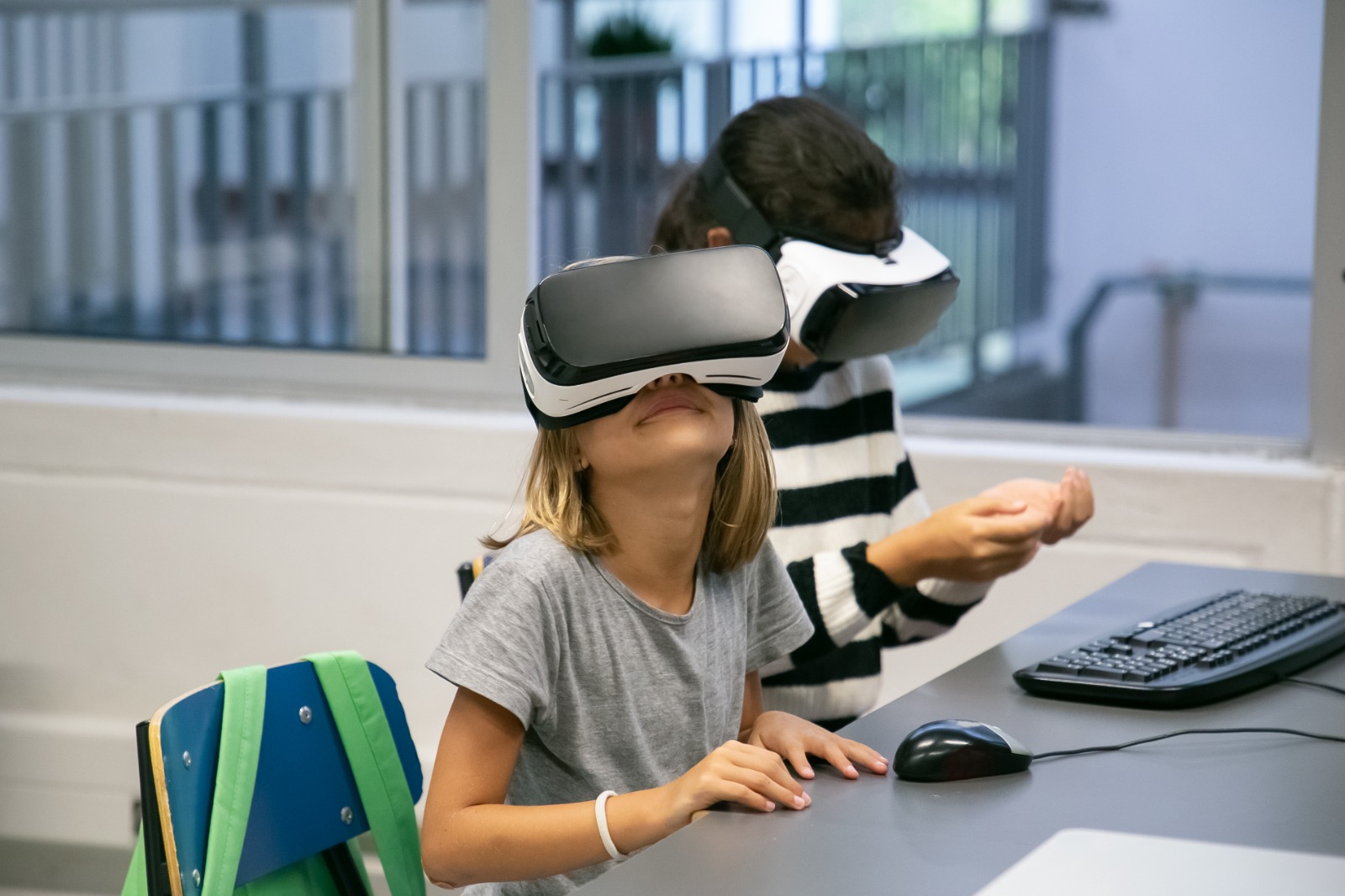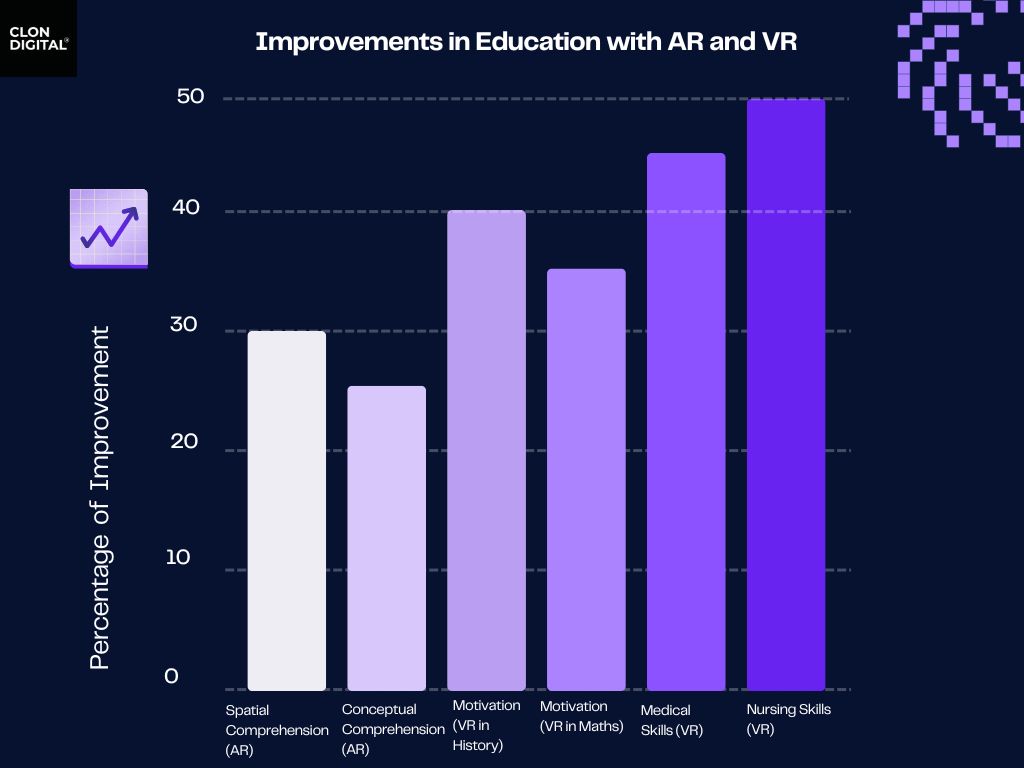The Clon Digital platform has established itself as a revolutionary tool in the field of experiential learning. By integrating solid educational theories with cutting-edge technologies, Clon Digital transforms the way students acquire and retain knowledge. It offers an immersive and effective educational experience.
The Importance of Experiential Learning
Experiential learning is based on the premise that people learn better by doing and experiencing rather than just listening or reading about a topic. This approach, supported by the theory that active participation and practical application consolidate knowledge in long-term memory, is the cornerstone of Clon Digital. As Albert Einstein once said, “The only source of knowledge is experience,” emphasizing the importance of learning through practice and experience.
By actively involving students in the learning process, greater engagement is fostered, leading to more effective retention of information. The platform allows students to apply theoretical concepts in practical situations, thus reinforcing their understanding and relevance in the real world. This hands-on approach is complemented by the use of multiple senses (sight, hearing, touch), creating more memorable experiences that facilitate knowledge retention.
Moreover, Clon Digital includes opportunities for reflection on what has been learned and provides constant feedback, which is crucial for consolidating knowledge and improving specific areas. By simulating real-world situations, students can see the practical application of their knowledge, making learning more meaningful and relevant to their everyday lives and future careers. The platform also encourages social interaction and collaboration among students, strengthening learning through idea exchange and joint problem-solving.
Edgar Dale’s Cone of Experience Theory
This theory provides a useful framework for understanding how different learning methods affect information retention. According to Dale, the most effective learning experiences are those that involve active participation and the use of multiple senses. The cone of experience suggests that people remember more of what they do compared to what they read or hear. This strongly supports Clon Digital’s approach. The platform uses technologies such as Augmented Reality (AR) and Virtual Reality (VR) to create interactive and multisensory learning environments.
Benefits of Augmented Reality (AR) and Virtual Reality (VR) in Education
Clon Digital integrates advanced technologies like AR and VR to offer an immersive educational experience that significantly improves academic results. These technologies allow students to interact with content in a dynamic and personalized way, creating learning environments that facilitate the exploration of complex concepts visually and practically.
The interactivity and engagement provided by AR and VR increase students’ motivation and commitment, resulting in more effective learning. Simulations and modeling provide practice in safe and controlled environments, which is essential for disciplines such as medicine, where students can practice surgical procedures without risk. Furthermore, these technologies allow for personalized learning, adapting to students’ individual needs and allowing them to progress at their own pace.
Collaboration and teamwork are other crucial aspects that Clon Digital promotes through virtual and augmented reality. It also facilitates joint work on projects and problem-solving remotely. These technologies also provide access to unique educational experiences, such as virtual visits to historical sites or advanced laboratories, enriching learning and making it more exciting.

A standout feature of Clon Digital is its ability to provide immediate feedback. This allows students to correct mistakes and improve their performance in real-time. This feature is essential for effective and continuous learning. Clon Digital enhances knowledge through experience.
Evidence of the Effectiveness of AR and VR in Education
Numerous studies have demonstrated the benefits of three-dimensional technology in learning. For example, Stanford University students who used augmented reality to study anatomy showed a 30% improvement in spatial comprehension and information retention compared to traditional methods. In the sciences, a study published in the Journal of Science Education and Technology reported a 25% improvement in conceptual understanding with the use of AR.
The use of these technologies has also shown a significant increase in students’ motivation. A study by the University of Maryland found that the use of virtual reality in teaching history increased students’ motivation by 40%. Similarly, a study published in the British Journal of Educational Technology observed a 35% increase in motivation with AR applications in mathematics.
In terms of developing practical skills, medical students at Harvard University who used VR simulations improved their skills by 45%. Similarly, a study in the Journal of Nursing Education reported a 50% improvement in practical skills with the use of virtual reality in nursing education.

These studies highlight the transformative potential of metaverse technology in the educational process, making it more interactive, immersive, and effective, which translates into better academic outcomes for students.
Clon Digital leverages virtual and augmented reality technologies to create an educational platform that not only facilitates a deeper understanding of concepts but also improves the retention and application of knowledge. By integrating these innovative methods, Clon Digital transforms learning into an interactive, immersive, and highly effective experience.
Clon Digital enhances knowledge through experience. To discover more, visit our website and feel free to contact us. We look forward to hearing from you!
Sources used to obtain the data shown in this article:
- Bauld, A. (2021, May 19th). Learning in Digital Worlds. Harvard News. https://www.gse.harvard.edu/ideas/news/21/05/learning-digital-worlds
- Benefits of Virtual Reality in Education: Tools & Resources | American University. (2024, April 17th). School of Education Online. https://soeonline.american.edu/blog/benefits-of-virtual-reality-in-education/
- How virtual reality is changing education. (w. d.). LSU Online. https://online.lsu.edu/newsroom/articles/how-virtual-reality-changing-education/
- Making VR a Reality in the Classroom. (w. d.). EDUCAUSE Review. https://er.educause.edu/articles/2021/4/making-vr-a-reality-in-the-classroom
- The American Biology Teacher (2023) 85 (1): 23-32

